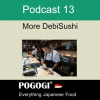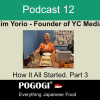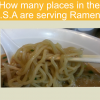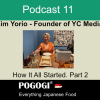Japanese Noodles
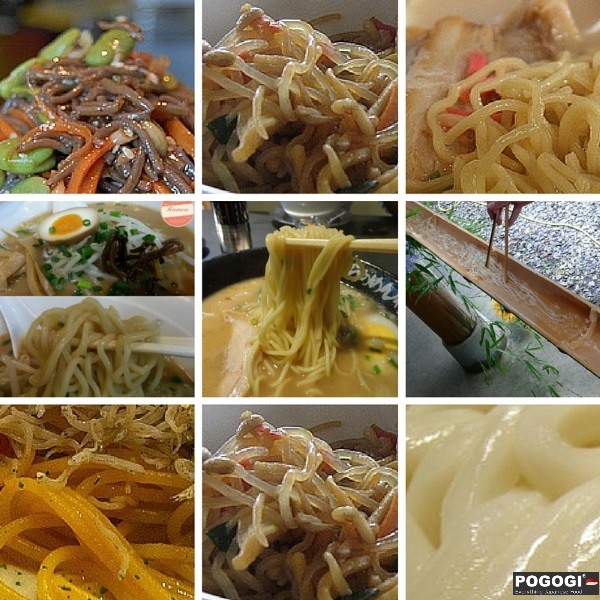
Noodles are an iconic part of Japanese cuisine! It has gain major popularity outside of Japan, especially with the recent boom of Sushi in the last decade. Much like rice, noodles are a staple and often used as a focal point in many Japanese dishes. Walking in the streets of Japan, there will be some kind of noodle shop everywhere you look.
There are plenty of varieties and each region in Japan boasts their own takes on noodles, often featuring local ingredients. In Japan, it’s a common custom to slurp noodles with sound, especially when it is in a broth. Feel free to slurp away if you’re eating in a traditional Japanese noodle shop or cooking these noodles yourself.
Ramen
One of the most popular noodles in Japan and abroad is ramen (considered to be the ultimate comfort food). Although it is associated with Japanese culture and food, ramen originated from Chinese roots and developed into a uniquely Japanese dish. The word ramen comes from the Chinese word, lāmiàn. In the early 1900’s, the first ramen shop opened in Tokyo where it employed Chinese immigrants. The first ramen was quite simple with a few toppings and a simple broth. As time went on, and due to a bigger supply of wheat from the U.S., ramen quickly gained popularity all over Japan.
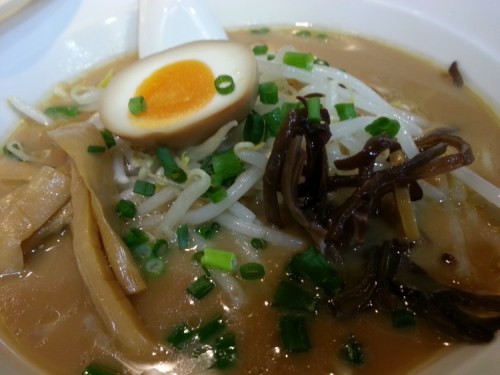
A unique aspect of ramen noodles is that in addition to wheat, it contains kansui (alkaline water). This is what gives the yellow appearance of the noodles as well as the denser texture. The noodles itself can be thick or thin depending on the region and type of ramen. The toppings can also vary but often includes pork slices, seasoned boiled egg, green onions, nori (seaweed), and more.
Common Types of Ramen
Shoyu Ramen
This type of ramen features a brown soy sauce based broth. The noodles in this ramen are usually about medium thickness and wavy.
Miso Ramen
Originating in Hokkaido, miso ramen uses miso paste (a fermented soybean paste) added to fish, chicken, or pork broth, that creates a rich and flavorful broth. The toppings can vary but because of its origin in Hokkaido, it can feature corn and butter (some of the local foods of Hokkaido).
Tonkotsu Ramen
This type of ramen uses a white-colored pork bone broth. The noodles are usually very thin. In ramen stores that serve tonkotsu ramen, it’s a common practice to ask for a kaedama (extra noodles) after finishing the original portion of noodles. Customers can keep adding noodles to their broth until they feel satisfied.
Shio Ramen
This is a very light tasting ramen with a clear broth. It usually uses a seafood based broth and the toppings are generally simple to highlight the broth and noodles.
For info on ramen click here.
Udon
Udon is a thick and chewy wheat noodle that’s usually accompanied by a soy sauce and fish based broth with different toppings. Toppings can include grated radish, green onions, fried tofu, and even tempura. This noodle also has its roots from China and the oldest accounts of udon can be traced to the 8th century.
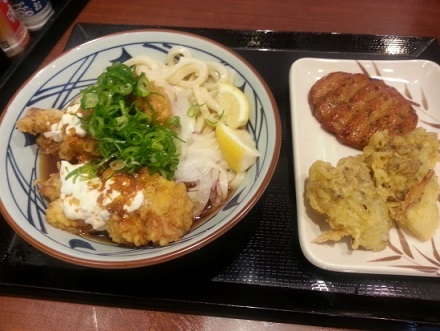
Udon also has many regional varieties, with differences in noodle shapes, toppings, and cooking styles. In general, it’s eaten quite simply in order to highlight the texture of the noodle. However, there are also modern versions that have popped up. These include stir fried udon (yakiudon), udon carbonara, or curry udon. Udon noodles is widely used as a Shabu Shabu ingredient. There are countless ways that udon can be served!
Common Udon Dishes
Kitsune Udon
Kitsune means fox in Japanese and this udon is served hot with sweet fried tofu. The sweet fried tofu, called aburaage in Japanese, is said to be the fox’s favorite food! This originates in Osaka where it’s more common to find sweeter dishes.
Tanuki Udon
Another animal-name udon is the tanuki udon. The tanuki is a racoon dog native to Japan. This udon is served hot with fried scraps that come from frying tempura. It is said that tanuki’s are deceptive. For this reason, the fried scraps can appear to be like tempura but they are actually just scraps.
Kake/Zaru Udon
Kake udon and zaru udon are the two most classic and simplest ways that udon can be served. Kake udon is served hot in a broth, and the zaru udon is served cold with the broth on the side for dipping. Both types of udon dishes have some small garnishes to add with the udon but it is kept very simple.
Soba
The main ingredient in soba noodles is buckwheat. The word soba actually means buckwheat in Japanese. Soba noodles are characterized by being thin and firm. Chefs making soba will train for years to achieve perfect cut noodles and firmness!
Compared to wheat noodles, soba is a superfood. The origins date back to the Edo period, around the 17th century. It became popular due to it being able to prevent beriberi, because soba contained thiamine. It has over 30 different styles in cold and hot format dishes depending on the region of Japan.
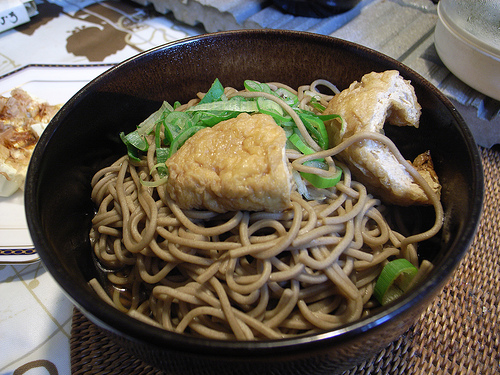
 by matsuyuki
by matsuyuki
How and when it’s eaten:
Similar to Udon
Soba is eaten in similar ways as udon, either hot or cold, and with the same toppings and garnishes. There are also kitsune, kake, zaru, and tanuki styles of udon.
Important New Years Food
In Japan, people eat soba during New Years Eve. This soba is called toshikoshi soba meaning “Going to the New Year soba”. It’s generally served in a classic way with a warm broth. The soba noodles represent strength and overcoming hardship.
Somen
Somen is an extremely thin wheat noodle often eaten during the warmer seasons. It’s similar in thinness to angel hair pasta. Unlike other noodle varieties, somen is made by stretching it out instead of cutting it. This is how they are able to achieve such a thin and round shaped noodle.
These noodles are extremely popular during summer months, especially during an event called the 'Golden Week' where families catch their somen from a Somen Slide.
Common Ways to Eat Somen
Cold Somen
Somen is most commonly served cold with a dipping sauce and garnishes like ginger and green onions. It’s also common to use ice cubes to chill the noodles as much as possible. Because of how thin the noodles are, it is most suited to be eaten cold. This way, the noodles firm up and don’t become soggy.
Nagashi Somen
This is a traditional way to eat somen and an especially fun activity in the summer. Somen is put into cold running water which goes across a kind of “water slide” made out of bamboo. The somen goes down this “slide” and it needs to be caught with chopsticks to eat it. There have even been some world records related to nagashi somen. The longest nagashi somen “slide” was 3,300 meters and the fastest speed recorded was 30 kilometers an hour.
Nyuumen
Although somen is usually eaten cold, it is also possible to eat it in a warm soup. This style of eating somen is called nyuumen. The broth is similar to what you might use for udon or soba.
Yakisoba
Yakisoba is a common street stall food that has no broth and is made by stir frying noodles in a dark colored sauce, similar to worcestershire sauce. Although the name has soba, this is a dish that is made from the noodles found in ramen. It’s usually stir fried with veggies and topped with red pickled ginger, aonori (green laver), bonito flakes, and Japanese mayonnaise. You can find yakisoba in stalls during Shinto festivals that often happen near shrines.
Yakisoba variations
Yakisoba Pan
Yakisoba can sometimes be found sandwiched inside a bread roll. It may seem weird to have carbs on carbs, but it is a very popular type of Japanese comfort food.
Hiroshima-style Okonomiyaki
Okonomiyaki is a savory Japanese pancake that is filled with various ingredients mixed into a batter. In Hiroshima, they have a distinct style of okonomiyaki which is filled with yakisoba noodles among other ingredients.
Shio Yakisoba
This type of yakisoba is the lighter version of the normal yakisoba. Shio, means salt, and instead of the traditional worcestershire based sauce, it is stir fried with salt and flavors such as garlic and pepper.
Shirataki
This is a noodle that is made from konjac yam, and it is usually a translucent white color. The name shirataki means white waterfall in Japanese and it describes the white color of the falling water.
Shirataki has lots of fiber and almost no calories. It has recently gained popularity as a health and diet food outside of Japan. However, there have also been claims that when they are eaten in large quantities it can cause swelling in the stomach. It’s best to eat them in moderation!
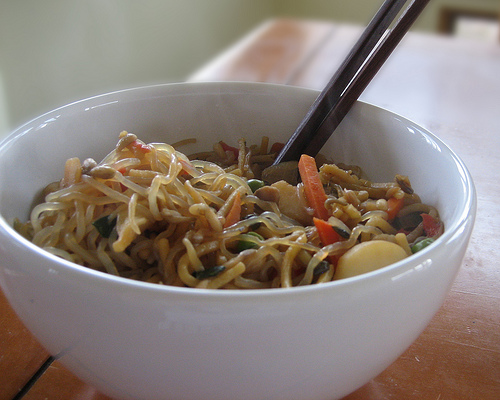
 by mdid
by mdid
How it’s eaten
Shirataki noodles are often found in hot pots because they don't dissolve or get soft when boiled. It’s an important ingredient used in sukiyaki, a sweet soy sauce simmered hotpot. With the increase in popularity as a diet food, it has also been used to replace pasta or other noodles in a wide variety of dishes.
Read more on Shirataki and its Health Benefits
Japanese Pasta
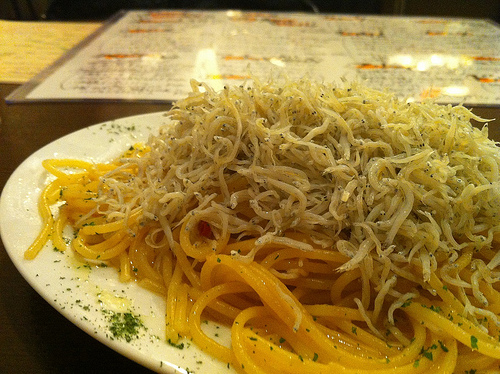
 by hirotomo
by hirotomo
Yes!, believe it or not, Japan has a love for Italian pasta especially noodles such as spaghetti, vermicelli & fusili. Tomato sauce is really popular along with flavors of Japan such as Sea Urchin and Spicy Cod. You probably thinking is there any difference between Traditional Italian Pasta and Japan's version? Well there is and you can read all about it in our Japanese Italian Pasta article.


